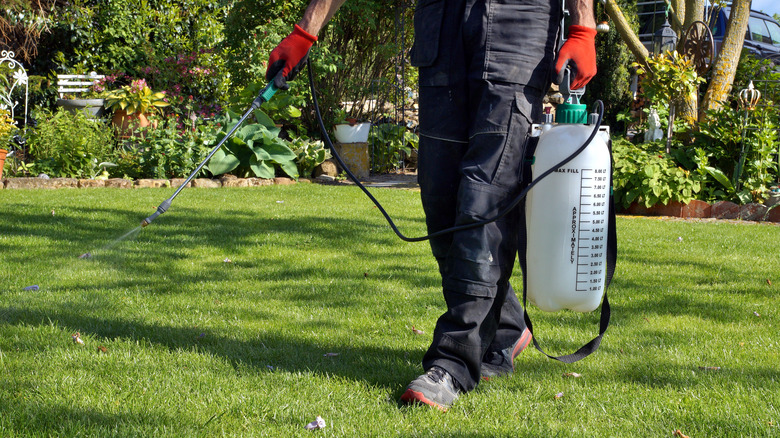We may receive a commission on purchases made from links.
Wild violets: You either love them or hate them. Sure, their purple petals make for a picturesque scene in the spring, but once they start rapidly multiplying in your lawn, they can quickly become a headache. Wild violets are cheeky intruders with a penchant for shady areas. They are invasive, with heart-shaped leaves (unlike the oval ones on African violets) and purple or blue flowers.
You have two options for dealing with wild violets: treating them organically or with chemicals. The organic route allows you to maintain harmony with nature while showing off your superior weed-whispering skills. But chemical methods can be a game-changer for those who fancy a quicker approach. Whether it’s a specially formulated herbicide that kills violets but not grass or a broad-spectrum weed killer, these potent potions can swiftly send those purple nuisances packing. But before you embark on your wild violet-wrangling adventure, a few words of caution. Follow the instructions carefully when handling chemicals, and avoid harming desirable plants, as these mischievous violets can often cozy up amongst them.
How to get rid of wild violets

The best time to tackle wild violets is in the fall when the plants are not actively growing and are more receptive to weed killers and herbicides — it’s like catching them when they least expect it. To get rid of wild violets organically, a combination of one part white vinegar and four parts water in a sprayer can save the day. But brace yourself for vinegar’s naughty side, as it might compromise plant growth and soil pH where applied, sneakily wreaking havoc on your beloved lawn Hand-pulling is another organic option for controlling wild violets, though it’s not exactly a walk in the park. And while dethatching rake can be a more efficient alternative to hand-picking, don’t underestimate the tenacity of violet roots left behind.
When using herbicides on wild violet, not just any weed killer will do the trick. You want a specialized assassin that can laser-focus in on those violets while sparing your precious grass. The best option is a broadleaf killer with quinclorac or dicamba, like this one from Amazon. A dash of spot treatment with a non-selective herbicide can also work wonders for milder infestations. You’ll know your treatments were successful once you begin to see brown and curled violets, but repeated treatments may be necessary for the utmost effectiveness.
Precautions and possible alternatives for killing wild violets
Lawn Care Life/YouTube
The quest to banish violet weeds from your lawn is admirable and worthy of celebration. But before embarking on this epic battle, consider applicable safety measures. Gloves that shield your hands, a sturdy pair of closed-toe shoes, and protective eyewear are your trusty companions in this endeavor. Don’t forget to use a sprayer too, to apply the herbicides or vinegar combo.
Additionally, keep an eye on the temperature when you’re applying herbicides, as low temperatures can slow down the reaction and effectiveness of the herbicide. In contrast, high temperatures can vaporize volatile ingredients like dicamba before they can work their magic. So, aim for the goldilocks zone of 65 to 85 degrees Fahrenheit when applying. Looking to stop the spread of wild violet before it even starts? Prevention measures against wild violets include sowing native grass varieties, mowing your lawn less often, and ensuring proper soil drainage.